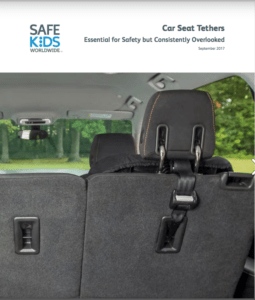This guest article continues SRN’s “Ask an Engineer” series with Dave Sander, CPST-I and engineer (formerly with Evenflo). This series gives an insider view of how CR engineers develop and design CRs, as well as new insights into CR functionality.
Boosters in bright colors have been on the market for a while, but have you ever wondered why CRs with harnesses don’t come in a variety of colors? I’m talking about the plastic shells, not the pads. As you might have noticed, that plastic is nearly always black, white, or a shade of gray, sort of like what Henry Ford famously said about his Model Ts, paraphrased above. And there’s a reason for that!
Read More from “Ask an Engineer: Can CRs Be Made in a Variety of Colors?”




 Consistently include tethering when describing the transition from rear to forward facing. I appreciated the
Consistently include tethering when describing the transition from rear to forward facing. I appreciated the 